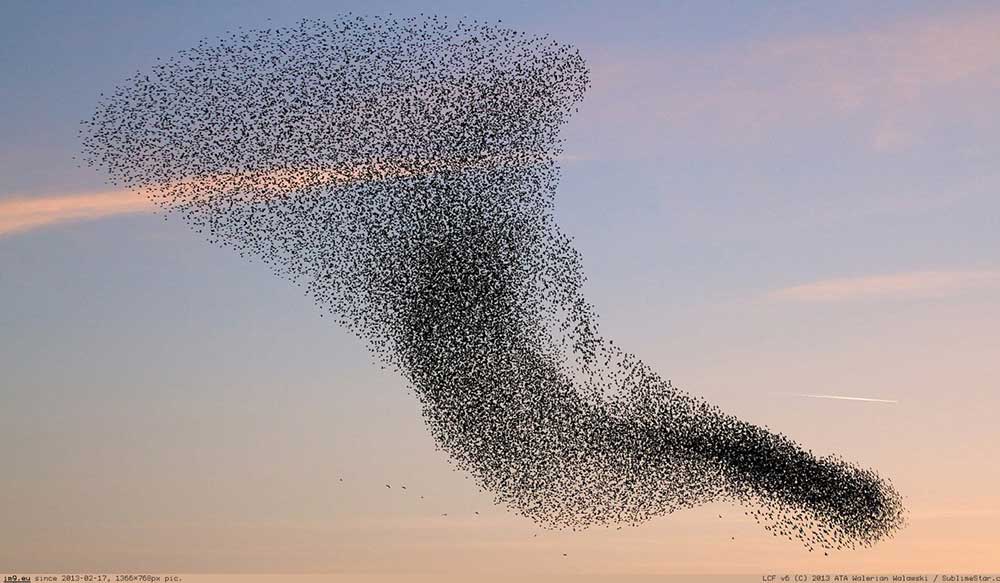
A flock of birds like these starlings exemplify the complex behaviors that swarm theory seeks to explore and adapt. Walerian Walawski
Swarm intelligence, or swarm theory, refers to decentralized, self-organizing systems, such as flocks of birds, whose actions "enable relatively simple individual entities to produce complex behavior when operating with other simple entities," says Michael Campobasso, CEO of Embedded Control Designs (ECD). The field is quickly moving from theory to practice as specialists like Campobasso seek to adapt these behaviors to swarms of drone aircraft and for other aerial and aerospace applications.
Embry-Riddle Aeronautical University (ERAU), the University of Pennsylvania and MIT are among the academic institutions where researchers are applying swarm theory to drones. Major defense contractors, including Northrop Grumman and Lockheed Martin, have government contracts for swarm research, and federal Small Business Technology Transfer Research (STTR) grants are available to firms working with academic institutions on important topics in the field.
Florida-based ECD, which Campobasso, a recent ERAU graduate, co-founded last year, has teamed with the controls group in ERAU's physical sciences department and is building quadrotor small unmanned aircraft systems (sUAS) and developing the control algorithms that will allow them to operate in swarms safely.
"We are conducting state-of-the-art research in creating and advancing fault-tolerant systems that actively learn how to handle flight failures in a safe and procedural manner," says Campobasso.
The FAA requires a waiver for commercial drone swarm operations, and Intel became the first company granted the waiver, for a prerecorded performance using 300 of its Shooting Star drones operated by a single individual, featured in the 2017 Super Bowl halftime show with Lady Gaga. But most researchers are interested in applications beyond entertainment.
ECD is focusing on agricultural applications, such as inspecting crops, where operations over farmland reduce risks to humans.
"In almost any drone operation, using a swarm would make it cheaper, better, faster," says Campobasso.
As Natalie Cheung, director of drones marketing at Intel, says, "If you inspect a bridge, if you can have more than one drone to do it, you have a faster way of inspecting the bridge. If you were doing search and rescue and you have one drone out there searching for you, it's much better to have a fleet of drones searching."
Swarm theory is also applicable to satellite constellations, and in the healthcare industry, where swarms of nanotech bots could be harnessed for medical procedures.
"When you allow entities to cooperate, they can become more powerful or capable than a single entity, and that's the true power of swarm technology," Campobasso says.
Anyone interested in entering the field "should focus on control systems and computer science," Campobasso says. "Typically, a position in this field will require a bachelor's degree related to one of these disciplines, and experience working with embedded systems. A solid foundation in mathematics is a must."
With the current state of the technology, most job opportunities are with government entities and military contractors working with sUAS and UAS. Expect entry-level salaries comparable to that of a related engineering discipline, ranging from about $60,000 to $85,000 annually.

Sign-up for newsletters & special offers!
Get the latest FLYING stories & special offers delivered directly to your inbox






